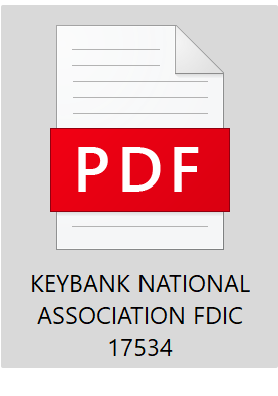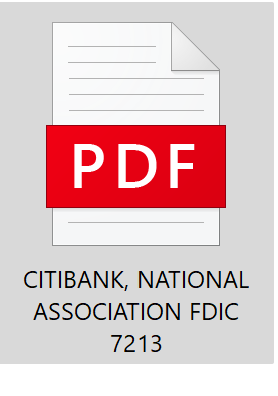FREE SAMPLE Silicon Valley Bank Safety Report
FREE Silicon Valley Bank safety report
Why are we providing the Silicon Valley Bank (SVB) safety report for FREE? We want to allow you to see the layout of our bank safety reports and the information that our reports contain. To do so, we are providing the Silicon Valley Bank safety report to you for immediate free download. We have similar reports for all of the 4500+ FDIC insured banks!
If you had money with Silicon Valley Bank (SVB), wouldn’t it have been nice to have some information that could help answer, “will Silicon Valley Bank (SVB) fail?” Banks pull your credit to decide if they will loan money to you. But, up until now, you didn’t have easy access to a similar tool. You were essentially stuck hoping that the bank you had loaned money to was stable. Now you can get information to make an informed decision about which bank(s) are safest and which ones to avoid.
What is this? Why do I want the FREE Silicon Valley Bank safety report?
This is a FREE SAMPLE bank report for Silicon Valley Bank FDIC# 24735 based upon FDIC data as of 4th Qtr. 2022. It provides you with a wide variety of important financial information regarding the bank.
Aren’t banks insured? Why do I care about this?
The FDIC insures bank accounts for up to $250,000. However, amounts over that limit are not generally insured. And while the FDIC strives to make funds available promptly up to the insured limit, wouldn’t it be better to have continuous access to your funds?
OK, even if there is a risk of failure and inconvenience – this doesn’t happen often – does it?
Actually, bank failures are rather common. Since October 1, 2000, there have been over 560 bank failures. Almost 1/10th as many banks as there are today have failed since October 1st, 2000.
The FDIC has limited funds, so in a widespread failure of banks, money may not be available even for insured deposits.
- There were almost 18 trillion dollars in bank deposits as of the end of 2022. In contrast, the FDIC reported only about 128 billion dollars in total deposit insurance funds, or about enough to cover about 0.71% of bank deposits. Importantly, the 128 billion dollars reported was before taking into account the cost of resolving the failures of Silicon Valley Bank, Signature Bank, and First Republic Bank.
- The FDIC has run out of money before. For six consecutive quarters, the FDIC did not have the funds to cover the losses incurred from the 2008 – 2009 bank failure period. Their available funds remained negative into 2011.
OK, so what do I get? What is the FREE SAMPLE Silicon Valley Bank Safety Report?
The bank report provides several key measures as explained below. Additionally, we offer a free sample bank report for Silicon Valley Bank that you can download for free immediately.
Section 1 – Equity Analysis in the FREE Silicon Valley Bank Safety Report:
This section lists the assets, liabilities, and owners equity for Silicon Valley Bank. The report then calculates the percent equity for Silicon Valley Bank and is compared to the industry average. Silicon Valley Bank’s rank among other banks is provided as well. The report ranks Silicon Valley Bank based upon its relative strength compared to other banks. Between 0 to 20 points are awarded based upon Silicon Valley Bank’s ranking.
Section 2 – Deposit and Liquidity Analysis:
This section provides the cash (and cash-like investments) for Silicon Valley Bank. Likewise, this section provides the amount of deposits that the bank holds for depositors.
This section evaluates the liquidity and percentage of deposits for Silicon Valley Bank. Silicon Valley Bank’s cash and cash-like assets (specifically deposits and other depository institutions, federal funds sold and reverse purchase agreements) can cover. A percentage of the deposits that Silicon Valley Bank can cover with these liquid cash-like assets is provided, as well as where Silicon Valley Bank ranks against other banks. This cash to deposit ratio provides an indication of how prepared the bank is financially able to return deposits to customers. This section awards between 0 and 20 points based upon the liquidity strength of the bank.
Section 3 – Un-realized Losses Due to Held-to-Maturity Securities:
This section provides insight into the risk level of hidden losses. Financial reports value Held-to-Maturity (HTM) Securities at amortized cost. However, in a rising interest rate environment (as we have seen lately). These securities lose value. This loss is NOT apparent in most financial reporting.
This section provides the book value of securities that the bank holds as Held-to-Maturity. This section presents both the dollar value and lists the percentage of total securities that are classified as Held-to-Maturity. Additionally, the section presents the percentage of total assets that Held-to-Maturity securities make up.
This section awards more points to banks that maintain a lower percentage of assets in HTM securities (i.e. fewer hidden losses). Banks with higher percentages receive fewer points. The range for this section is from 0 to 20 points.
Section 4 – Deposit Insurance Analysis:
The FDIC insures most bank deposits up to $250,000. Normally, the FDIC does not insure amounts beyond the $250,000 limit. This makes it likely that depositors with accounts greater than $250,000 will transfer money out of their account if they become concerned about the bank. This can cause the bank to have to sell assets in a rush or borrow money to meet depositor demand. All three of the recent bank failures: Silicon Valley Bank, Signature Bank, and First Republic Bank had relatively low levels of insured deposits. Our system gave each of them a score of 0 or 1.
This report provides the percentage of deposits that the FDIC reports as insured as well as the number of banks with higher and lower levels of insured deposits. Our system then awards between 0 and 20 points based upon the bank’s level of insured deposits compared to other banks.
Section 5 – Profitability Analysis:
This section provides Silicon Valley Bank’s net income and return on assets. However, not all gains and losses are included in net income. Since net income provides an incomplete picture, this section also includes other comprehensive income. Other comprehensive income provides additional insights beyond what is available when the focus is just on net income. This is especially relevant in today’s banking environment, where generally safe investments such as bonds are losing a significant portion of their value.
Other comprehensive income includes gains and losses from such things as foreign currency translation, changes in value of cash-flow hedges, certain pension costs, and changes in values of securities classified as “available for sale.” This last category is especially important in today’s interest rate environment.
This report provides not just net income and return on assets, but also measures the effects of net income and other comprehensive income combined, as well as provides the return on assets for a more complete view of profitability. Furthermore, the bank is ranked against all other FDIC insured banks and a score of 0 – 20 points is provided based upon their performance.
Section 6 – Overall Rank and Score:
This section takes into account all of the measures above and provides both a numerical score out of 100 possible points as well as providing the approximate rank of the bank compared to all other FDIC insured banks.
Bonus Section – Off-balance sheet and Derivative Analysis:
Off-balance sheet items and derivatives can expose your bank to significant additional risks. There are many different types of derivatives and their use is complicated and multifaceted. As such, off-balance sheet and derivative holdings are not utilized in providing the score for Silicon Valley Bank. However, we do provide you with the total notional value of derivatives. Additionally, the value of off-balance sheet liabilities that Silicon Valley Bank has on its books are provided. So, you can be aware of the degree to which Silicon Valley Bank utilizes derivatives and has other off-balance sheet exposure.
Free Silicon Valley Bank Safety Report Wrap Up:
The information provided in this report provides significant information regarding Silicon Valley Bank’s failure. The reader will have significantly more information about Silicon Valley Bank than non-readers and would have been aware of their weakness ahead of the masses.
We have reports with the same information for ALL FDIC insured banks.






